Baby turtles at Sukamade sign of better conservation efforts in Indonesia
The release of baby turtles into the waves at Sukamade Beach in East Java is a daily ritual as part of a turtle conservation programme intended to bolster the prospects of the endangered creatures.
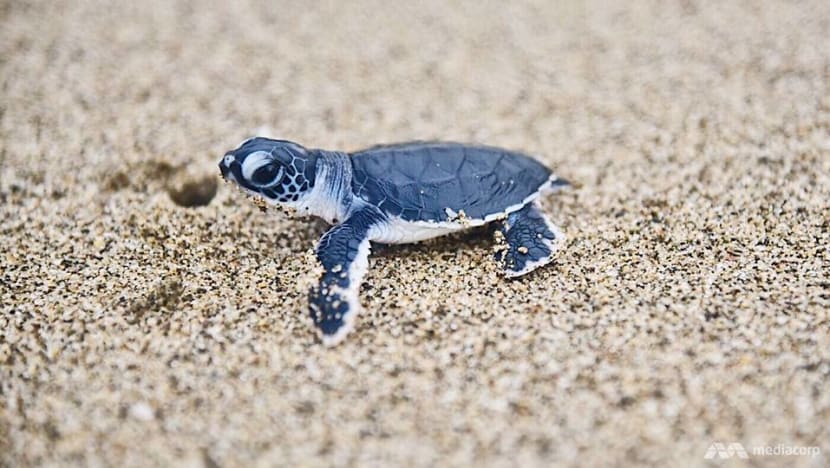
A baby green sea turtle makes its way towards the waves at Sukamade Beach. (Photo: Jackson Board)
SUKAMADE, Indonesia: The run of freedom to the open sea is the most dangerous time in the life of a baby turtle.
Still, it is a spectacularly heart-warming moment to witness – an instant where pure incorruptible instinct is put on display, as nature always intended.
Out of a thousand hatched green sea turtle youngsters, maybe just one or two will survive to become fully mature reproducing adults. It is a sobering realisation as dozens of day-old green sea turtles begin the most fraught passage of what will be a precarious life.
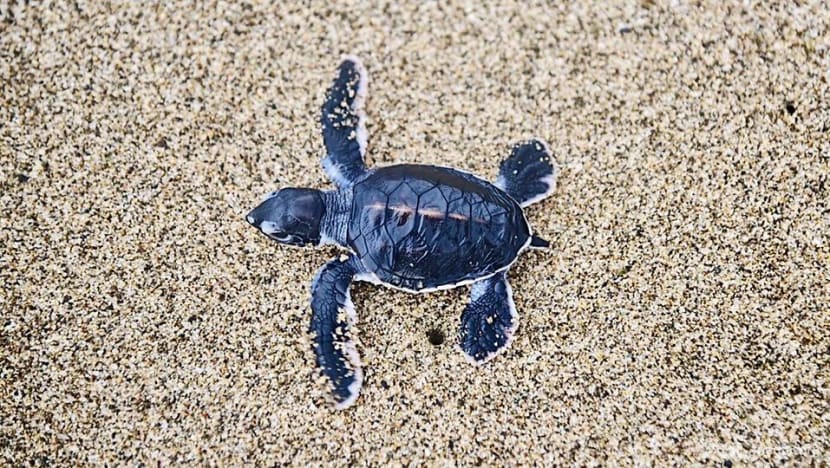
On cue, an eagle emerges from the clouds and begins making ominous circles over the rough jade waters the baby turtles will, from now on, call their home. And the winged hunter will not go hungry this morning.
The release of turtle infants into the waves at Sukamade Beach in East Java is a daily ritual as part of a turtle conservation programme intended to bolster the prospects of the endangered creatures. Turtles in Indonesia have seen their habitats rapidly degrade in recent decades and poaching threatens their behaviours and future populations.
“It’s better for us to treat the turtles as naturally as possible. If the egg hatches, the baby turtle’s instinct is only to think about going to the water,” said Adrian Hepta Poniman, a ranger at Meru Betiri National Park, charged with overseeing the local turtle-hatching programme.
“There are two kind of releases. The first one is for education; the other one is for conservation,” he said. “The education one is for the visitors. It’s very limited. We only give them 10 to 15 turtles in a bucket.
“But for conservation, we could release hundreds of them. So, if this morning there are 500 eggs hatched, we will release all of them at night – all of them,” he said.
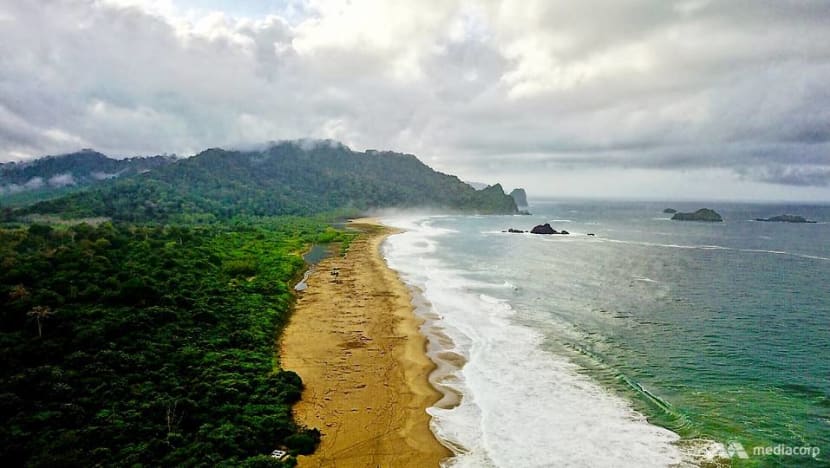
A few hundred metres from the beach, which is one of 10 natural nesting sites for turtles in Indonesia, is a small sheltered building where eggs are being prepared for the moment of awakening, a few feet below the surface.
Row upon row of carefully signposted artificial nests have been buried into the sand. Rangers carefully supervise the 52- to 60-day incubation process, after which the babies will bury their way out and up.
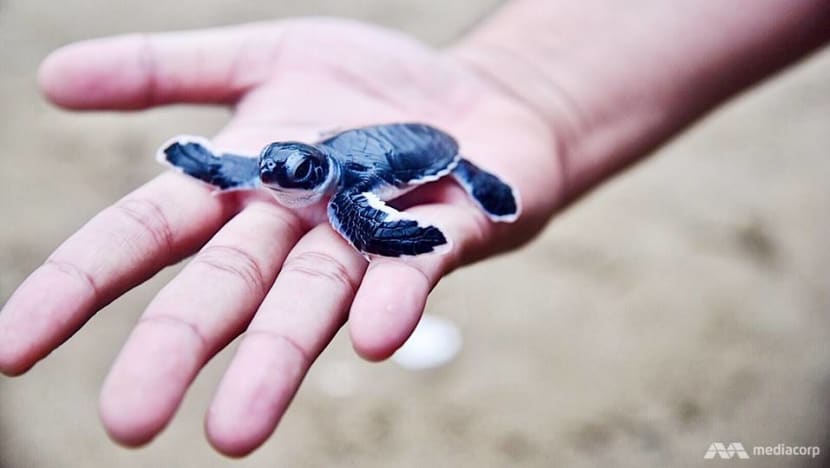
How these eggs got there is another part of the magical process that unfolds nearly every day at Sukamade.
With the moon covered by fast moving clouds, it is almost pure darkness on the beach as a handful of rangers and tourists gather and wait in silence.
Turtles have a remarkable ability to return to their birthplace when the time comes to lay eggs. The long sandy expanse of Sukamade is a point of pilgrimage for many of the mature turtles that once hatched here over the previous decades.
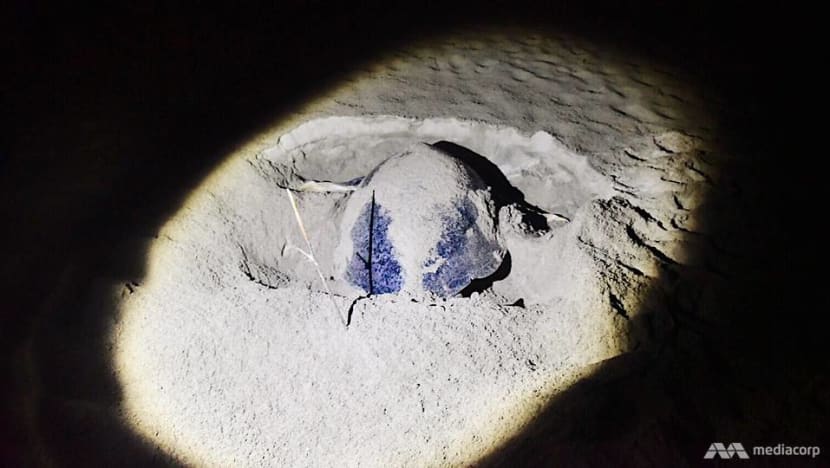
For visitors, there are no phones allowed, no flashing cameras or any device that emits artificial light. This is a special, sensitive time and the rangers enforce strict measures to make sure the adult females are not disturbed.
It is part of an effort to ensure sustainable eco-tourism can be a real force of change, raising awareness of the turtles’ plight without intruding too far into wild animals’ space.
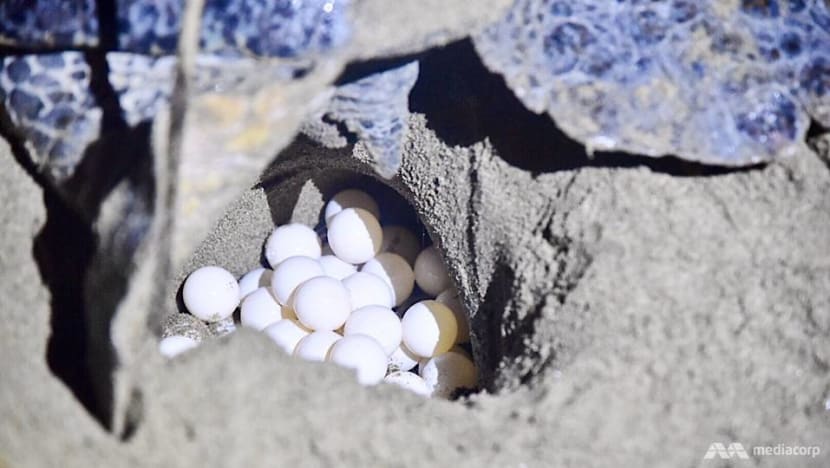
The guides spot a welcome visitor who has crawled out of the surf and 20m up to the shore – an enormous green sea turtle. Indonesia is home to six out of seven species of turtles in the world, but greens are the most common at this site.
She is old, the guide says. Green turtles will continue laying their entire lives, from when they are 25 to 30 years up until their old age; they can live for a century, it is believed. In that time, they will lay thousands of eggs.
“After they lay their eggs for the first time, they will come back again in the next 15 to 20 days to lay another batch of eggs,” Adrian said. “During one season, sea turtles can lay their eggs five to six times.”
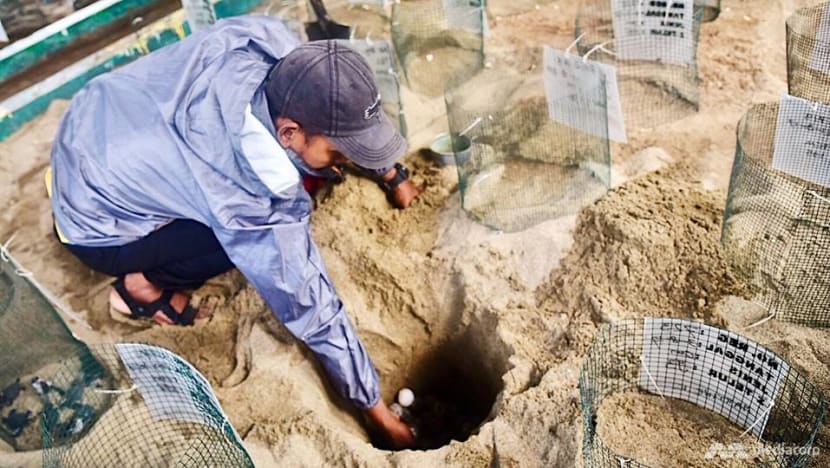
Tonight, she has dug a deep hole and lays 93 eggs, all while the group stands close behind her watching in a hushed awe. Two of the guides are quick to jump right into the burrow to collect the eggs as they fall, placing them carefully into a hessian bag.
It seems a sad form of interference being inflicted on the near-exhausted turtle, but Adrian explains that harvesting the eggs is a necessity to save the species.
He says that the eggs collected by the programme have a 75 to 80 per cent hatching success rate, which he admits is significantly lower than in the wild.
“Those numbers are still better than nothing at all. Because if we just left them in the natural habitat, it will be worse.”
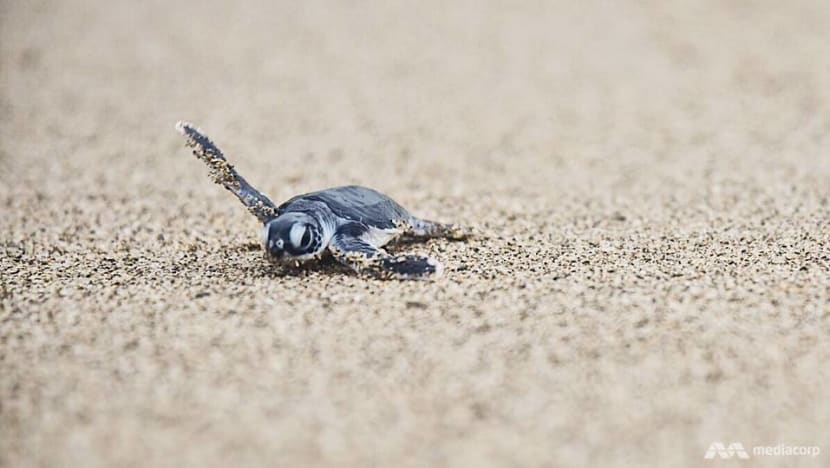
Animals, particularly wild boars, are a constant threat to the vulnerable eggs. But humans have been the biggest destructive force against turtle survival.
World Wide Fund for Nature (WWF) estimates that some turtle species have dropped in population by 90 per cent compared to the past, mostly due to egg harvesting and consumption by humans.
At Sukamade, tourism is being used as the trigger to change human behaviour around turtles.
“(It) is considered an alternative to change the way Indonesian society takes advantage of sea turtles, from extractive means into a sustainable practice,” said Dwi Suprapti, the Marine Species Conservation Coordinator for WWF Indonesia.
“Sea turtle based ecotourism in Sukamade has successfully driven coastal community practices from egg poaching into tour guides and coast guards.”
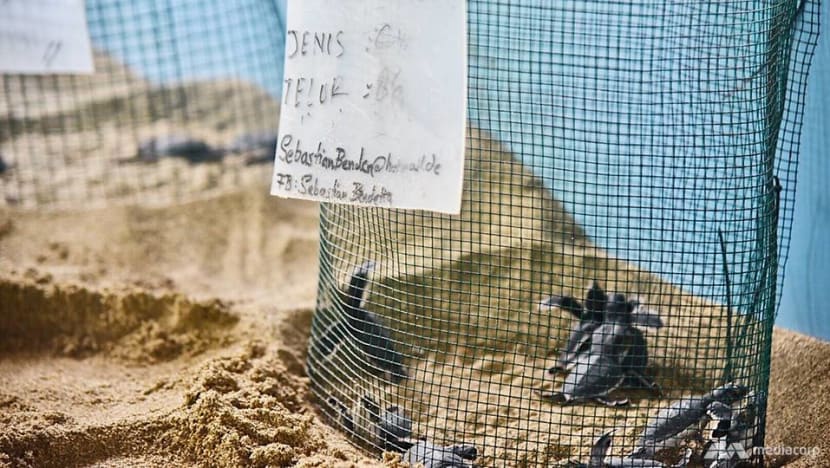
During the visit, Channel NewsAsia was made aware of a black market that still operates for turtle eggs. But the spate of such practices is swiftly reducing, according to Adrian.
“Nowadays, the number of black markets for turtle eggs is very low.
We almost can’t find them anymore,” he said. “It’s different than it used to be, when they were sold openly."
“Over the years, everyone has increased awareness of the conservation issue. We all know that sea turtles are an endangered species now.”
WWF says there is a “strong outlook” for turtles in Indonesia, with conservation programmes like Sukamade a key priority for the national government.
The delicate balance of life and death for turtles is clear, but especially comes into perspective as the baby turtles make their dash to the waves.
They will survive on instincts, but a little help along their journey could be just what they need.












